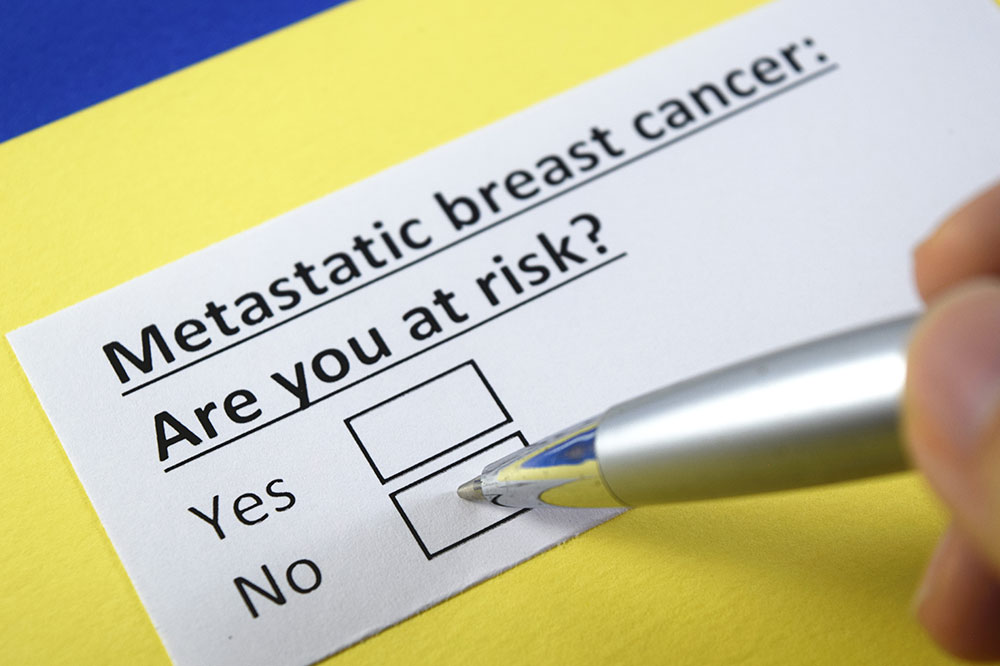
Metastatic breast cancer – Causes, symptoms, and management
Breast cancer is called metastatic when it has spread to other body parts. Doctors also refer to it as Stage 4 breast cancer—the most advanced stage. The term metastasis implies that the cancer cells have broken from their original tumor and spread to the other organs. In this condition, the abnormal cells usually move from the breast to the lungs, liver, brain, and bones via the lymphatic system or bloodstream.
Causes
One of the primary causes of the disease progressing to the metastatic breast cancer stage is that the initial treatments were unable to destroy the cancer cells, or the cancer was not detected in time, allowing the tumor to grow and spread uncontrollably. Scientists are examining why metastatic breast cancer develops in some, but not all, breast cancer cases. Generally, all breast cancers can metastasize, but the following factors increase the risk of metastasis:
- Breast cancer type: Some cancers are aggressive, such as triple-negative or HER2-positive, and their treatment is tricky, so they are more likely to spread.
- Diagnosis stage: Cancers that are very large or have spread to the lymph nodes are more likely to metastasize.
- Growth rate: Fast-growing cancers are more susceptible to metastasis
Symptoms
Typically, breast cancer can spread or metastasize to different body areas, such as the liver, brain, lungs, and bones. However, the disease may affect other body parts too. So, the symptoms can vary depending on the location of the tumor. However, here are some of the common signs one may observe:
- Joint, bone, or back pain that does not go away
- Weakness in the body
- Urinary incontinence, or difficulty urinating, is a sign that cancer is pinching the nerves in the back
- Numbness
- Difficulty breathing or shortness of breath
- Constant dry cough
- Loss of appetite
- Pain or tenderness
- Chest pain
- Abdominal bloating
- Loss of appetite
- Vomiting
- Constant nausea
- Jaundice
- Vision problems—loss of vision, double vision, or blurry vision
- Severe headache
- Loss of balance
- Seizures
- Confusion
Diagnosis
In people exhibiting the common symptoms, the doctor may recommend the following tests for diagnosis:
- Imaging tests, such as PET, bone, CT, and MRI scans
- Comprehensive metabolic panel
- Complete blood count
- Biopsy to remove tissue from the suspicious area for analysis
- Bronchoscopy—employing a scope to examine the inside of the lungs, especially when doctors find a concerning spot in the organs
- Spinal tap that involves removing fluid from the spinal cord
- Pleural tap involving removal of a liquid from the lung area
Treatment options
Typically, metastatic breast cancer treatment consists of systemic therapies. First, prescription options may be recommended over radiation or surgery. The goal of treatment is to help slow or shrink the tumor growth, improve quality of life, and ease the symptoms. However, the doctor may look for alternatives whenever the initial measures do not deliver desired results or cause uncomfortable side effects. In most cases, patients undergo a combination of options instead of a single treatment to combat the cancer. So, the doctors may choose one or more of the following:
Immunotherapy: This approach employs prescriptions to stimulate the immune system and kill the cancer cells in some breast cancers. Some common side effects associated with it are autoimmune reactions, loss of appetite, rashes, nausea, coughing, or fatigue.
Targeted therapy: This is one of the newer treatment options that work by blocking some specific kinds of gene mutations or proteins fueling breast cancer. It involves using prescriptions to slow or stop the growth of cancer. Usually, targeted therapies are used in combination with hormone therapy or chemotherapy. Side effects can vary depending on the prescription treatment used.
Hormonal therapy: Here, prescriptions aim to stop the production of hormones, such as progesterone and estrogen. Some breast cancers have proteins or receptors annexed to the hormones to stimulate their growth. Blocking these hormones stops cancer progression. This treatment helps those with hormone receptor-positive cancers. Some common side effects of hormone therapy are vaginal dryness and hot flashes.
Chemotherapy: Usually, doctors recommend chemotherapy for triple-negative breast cancer. It is typically administered in cycles over several weeks. Some patients have a better chemotherapy tolerance than others, but many experience common side effects such as hair loss, fatigue, mouth sores, loss of appetite, diarrhea, and nausea.
While there is no permanent cure for the condition, the newer treatment strategies can help improve the survival rate and quality of life for those with metastatic breast cancer. One should consult a doctor as soon as they observe one or more signs of the disease and seek a prompt diagnosis to better manage the symptoms.




